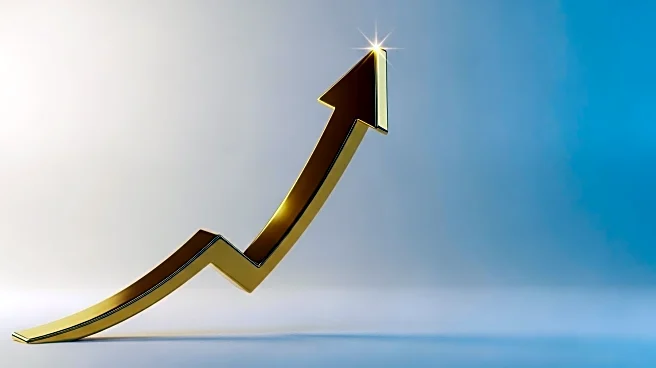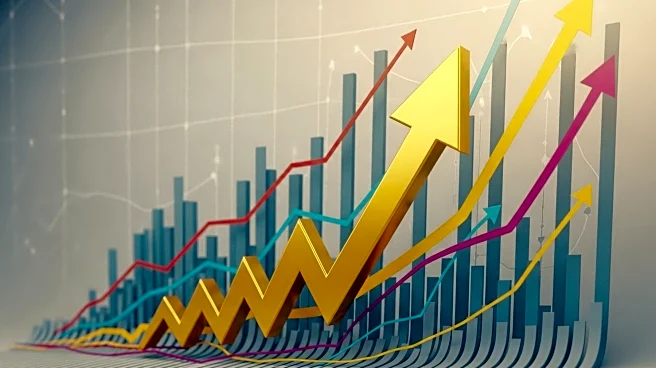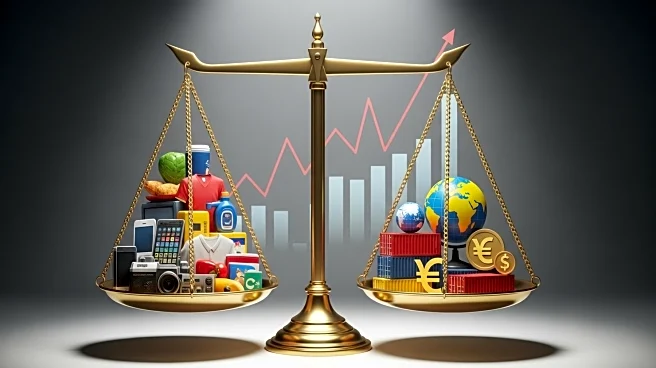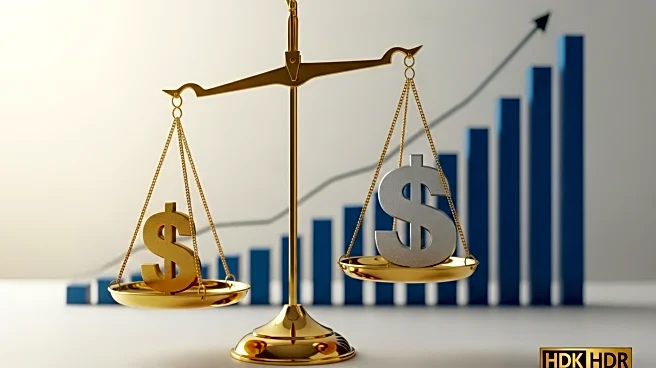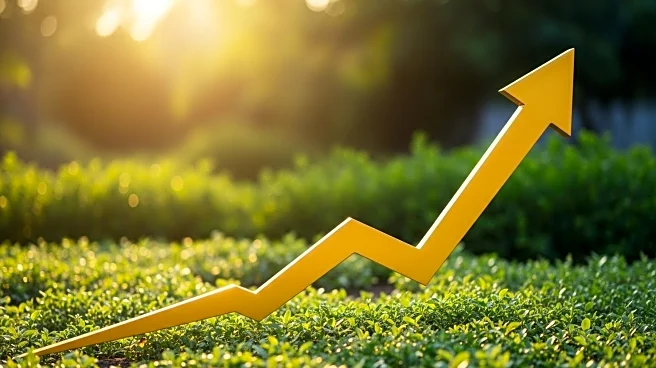What's Happening?
The U.S. economy experienced a significant upward revision in its growth rate for the second quarter of 2025, as reported by the Commerce Department. The revised growth rate now stands at 3.8%, up from the previously estimated 3.3%. This adjustment is largely attributed to stronger consumer spending, which accounts for more than two-thirds of the economy. Consumer spending was revised to a 2.5% increase, up from the initial 1.6% estimate. Additionally, business investment in intellectual property products and equipment saw upward revisions, contributing to the overall economic growth. The trade deficit also contracted sharply, adding a record 4.83 percentage points to GDP growth. Despite these positive indicators, economists anticipate a slower growth rate in the second half of the year due to ongoing trade policy uncertainties.
Why It's Important?
The revised GDP growth rate highlights the resilience of the U.S. economy amid challenging trade conditions. The increase in consumer spending and business investment suggests a robust economic environment, potentially reducing the need for further interest rate cuts by the Federal Reserve. However, the impact of President Trump's tariffs and immigration policies has been noted as factors affecting job growth, which nearly stalled in recent months. The revised data provides a clearer picture of economic health, influencing investor sentiment and financial markets. The stronger-than-expected growth may bolster confidence in the U.S. economy, although concerns about trade policy continue to loom.
What's Next?
Economists predict a tepid growth rate in the second half of 2025, estimating an annual growth of about 1.5% due to trade policy uncertainties. The Federal Reserve's interest rate decisions will likely be influenced by these economic indicators, with potential implications for monetary policy. Businesses and policymakers will need to navigate the effects of tariffs and immigration policies on the labor market. The ongoing analysis of economic data will be crucial in shaping future economic strategies and maintaining stability.
Beyond the Headlines
The revisions to GDP growth underscore the complexities of measuring economic health amid fluctuating trade dynamics. The sharp contraction in the trade deficit, driven by changes in import patterns, highlights the impact of trade policies on economic metrics. The interplay between consumer spending, business investment, and trade policies presents a multifaceted challenge for economic forecasting and policy-making. Long-term implications may include shifts in trade relationships and adjustments in domestic economic strategies.

